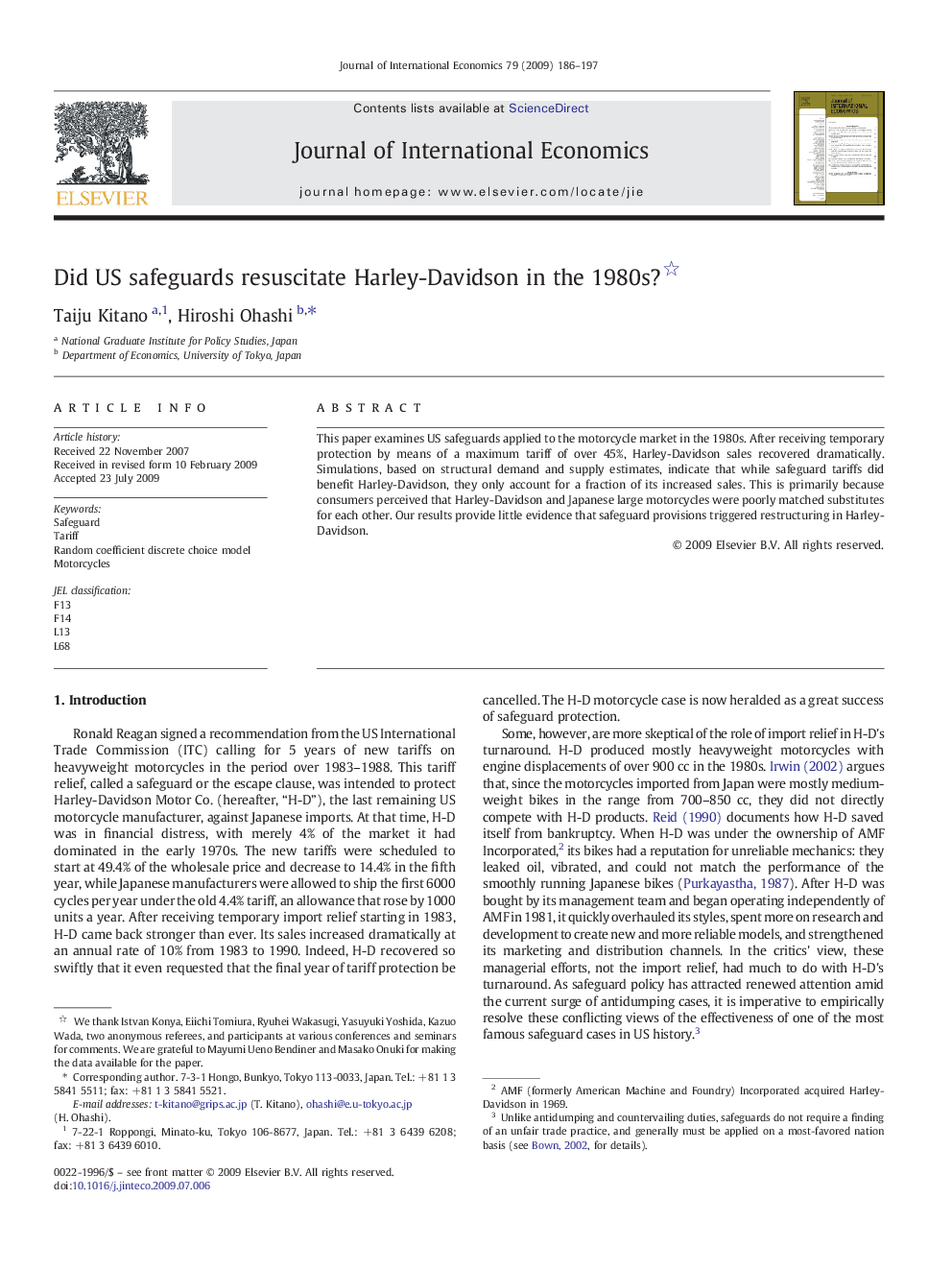| Article ID | Journal | Published Year | Pages | File Type |
|---|---|---|---|---|
| 962407 | Journal of International Economics | 2009 | 12 Pages |
Abstract
This paper examines US safeguards applied to the motorcycle market in the 1980s. After receiving temporary protection by means of a maximum tariff of over 45%, Harley-Davidson sales recovered dramatically. Simulations, based on structural demand and supply estimates, indicate that while safeguard tariffs did benefit Harley-Davidson, they only account for a fraction of its increased sales. This is primarily because consumers perceived that Harley-Davidson and Japanese large motorcycles were poorly matched substitutes for each other. Our results provide little evidence that safeguard provisions triggered restructuring in Harley-Davidson.
Related Topics
Social Sciences and Humanities
Economics, Econometrics and Finance
Economics and Econometrics
Authors
Taiju Kitano, Hiroshi Ohashi,
